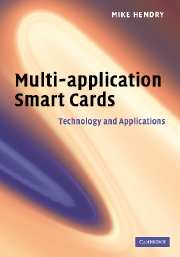Book contents
1 - Background
from Part I - Introduction
Published online by Cambridge University Press: 11 August 2009
Summary
Smart cards in daily life
Cards are so much part of our daily lives that we do not even think about their functions, the technology behind them or the things that make them special.
Cards are behind some of the biggest changes in behaviour in the Western world since 1970 – the way we enter buildings, pay for goods in shops, speak to our friends and business partners. Back in 1970 it would have been difficult to imagine the ease with which we now draw money from ATMs in foreign countries, or that many ten-year-olds would have their own telephones.
Many of these changes have helped to spread technology as well, benefiting a wide range of people in poorer countries and remote areas. Where there is no reliable telecommunications network, the ability to store a patient's health records in a card can save lives. In most African and many Asian countries, there are many more mobile telephones than fixed lines; these telephones not only use cards to provide security and added functions, but may themselves act as terminals for other card-based applications, such as microfinance.
It's not all good news, of course: some of these changes have been made necessary by the increasing need for security, while others have increased efficiency but have incurred a cost in reduced personal service and social interaction. And not all card projects have been equally successful.
- Type
- Chapter
- Information
- Multi-application Smart CardsTechnology and Applications, pp. 3 - 10Publisher: Cambridge University PressPrint publication year: 2007



